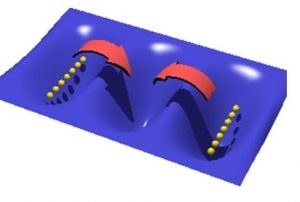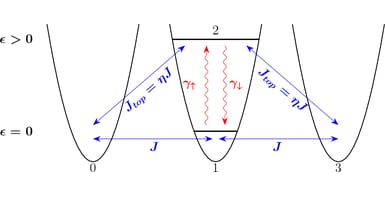Decoherence plays an important role in quantum mechanics. In general, uncontrolled interaction of a quantum system with its environment will cause it to lose its quantum properties. Controlled decoherence or dissipation, on the other hand, can be used to engineer certain quantum properties, see e.g. the quantum Zeno effect.
 Dr. Wimberger and his team aim at a better understanding of decoherence processes on a microscopic level with possible applications in controlling the motion of singe atoms. Recent theoretical and experimental works have investigated the filling process of an initial empty site in a periodic lattice. The particle current into the depleted site strongly depends on the atom-atom interactions, the geometry and dimension of the setup, as well as on the precise nature of the thermalization or decoherence process involved.
Dr. Wimberger and his team aim at a better understanding of decoherence processes on a microscopic level with possible applications in controlling the motion of singe atoms. Recent theoretical and experimental works have investigated the filling process of an initial empty site in a periodic lattice. The particle current into the depleted site strongly depends on the atom-atom interactions, the geometry and dimension of the setup, as well as on the precise nature of the thermalization or decoherence process involved.
In their paper, recently published in Annalen der Physik, effective models are proposed to analyze the influence of different incoherent processes on the dynamics of bosonic atoms during the refilling. This is done by use of numerical simulations based on quantum Monte Carlo computations. Both for noise and an incoherent coupling between different single-particle modes of the depleted site, qualitative agreement with the experimental data is found. Surprisingly, the refilling-time follows a power-law scaling over a wide parameter range independent of the details of the decoherence process.
The text is kindly provided by Dr. Sandro Wimberger.
The article will be publishes in the forthcoming special issue Many-Body Localization
(Guest Editors: Jens H. Bardarson, Frank Pollmann, Ulrich Schneider, Shivaji Sondhi)

















